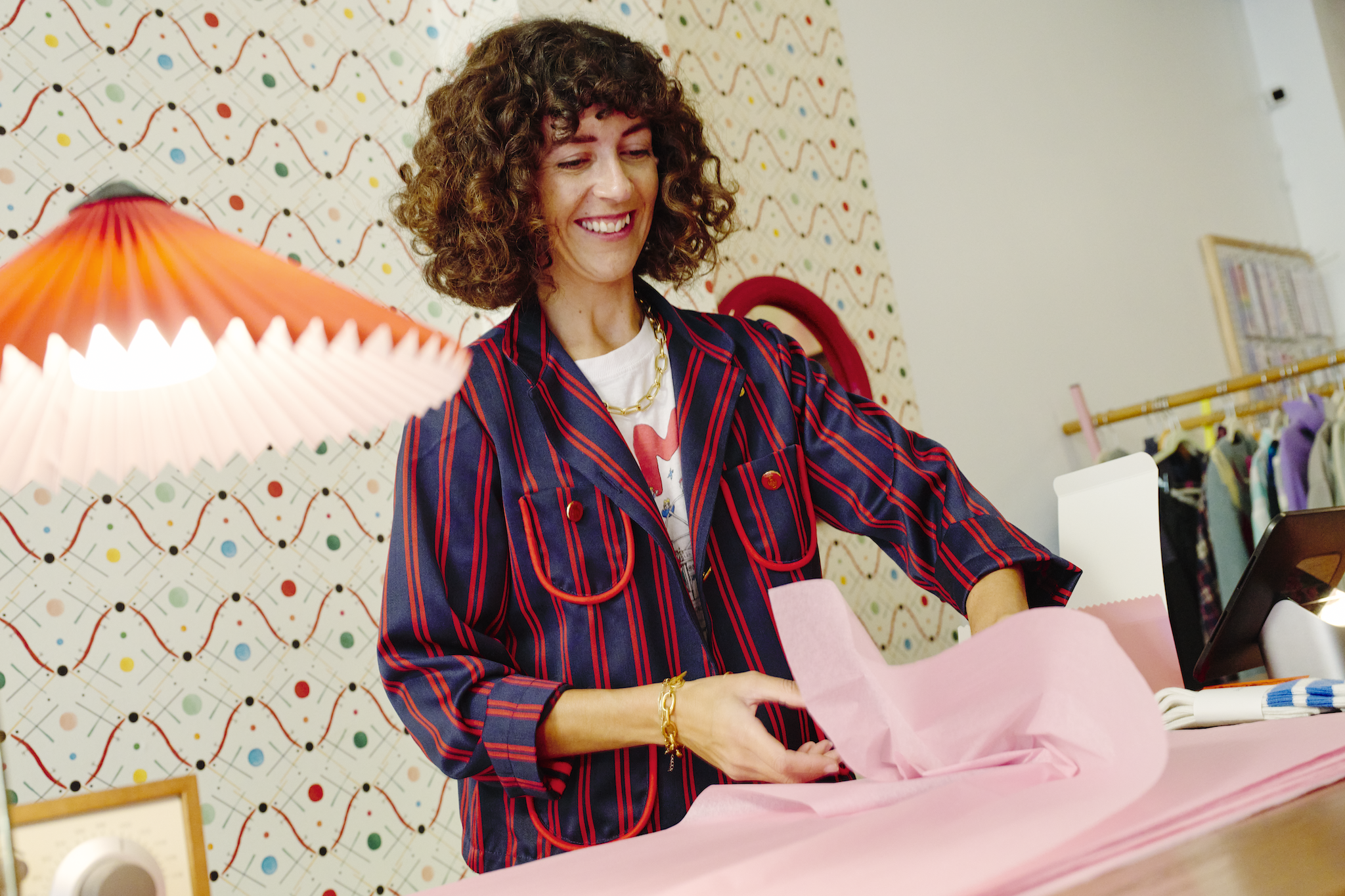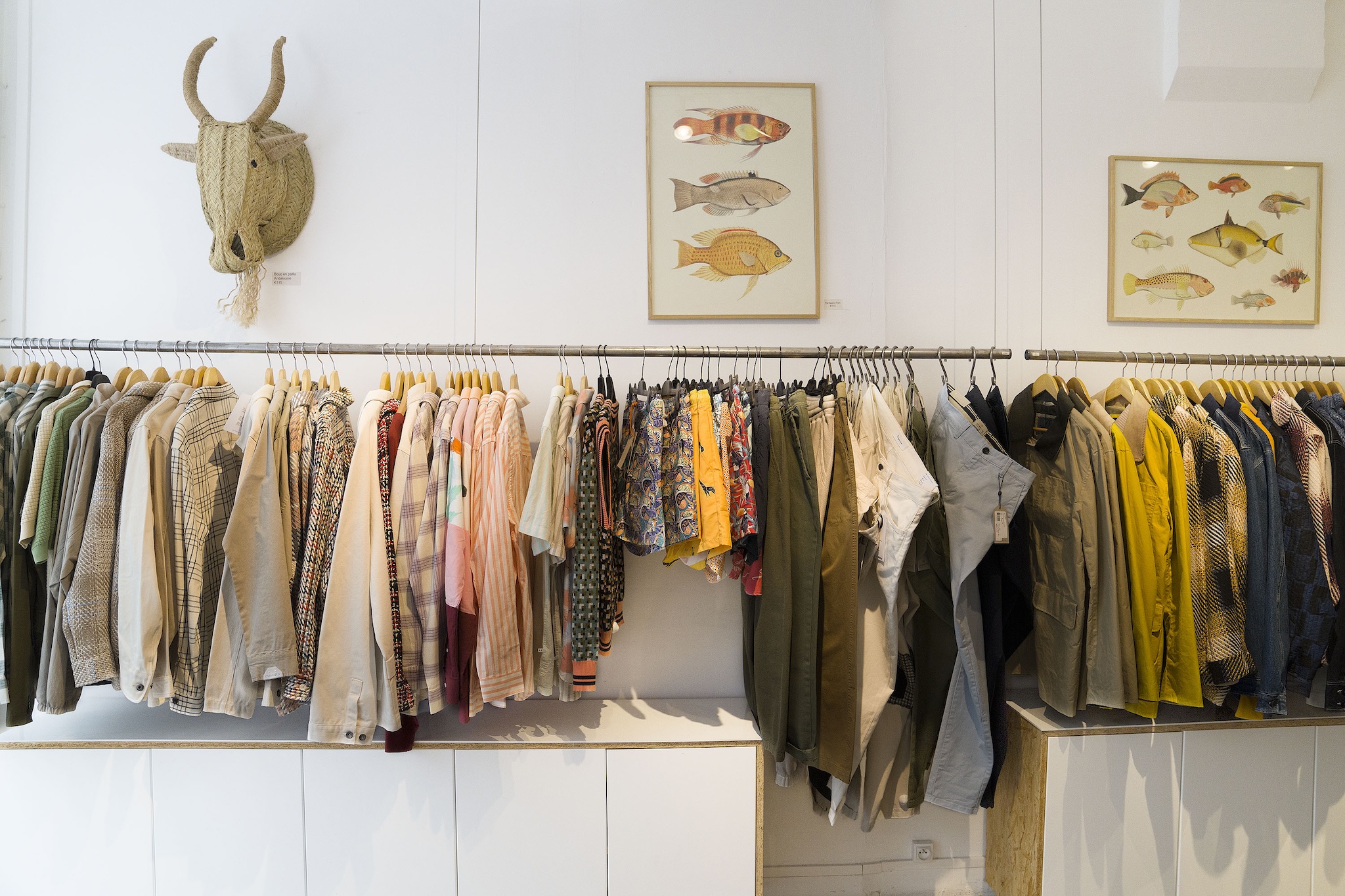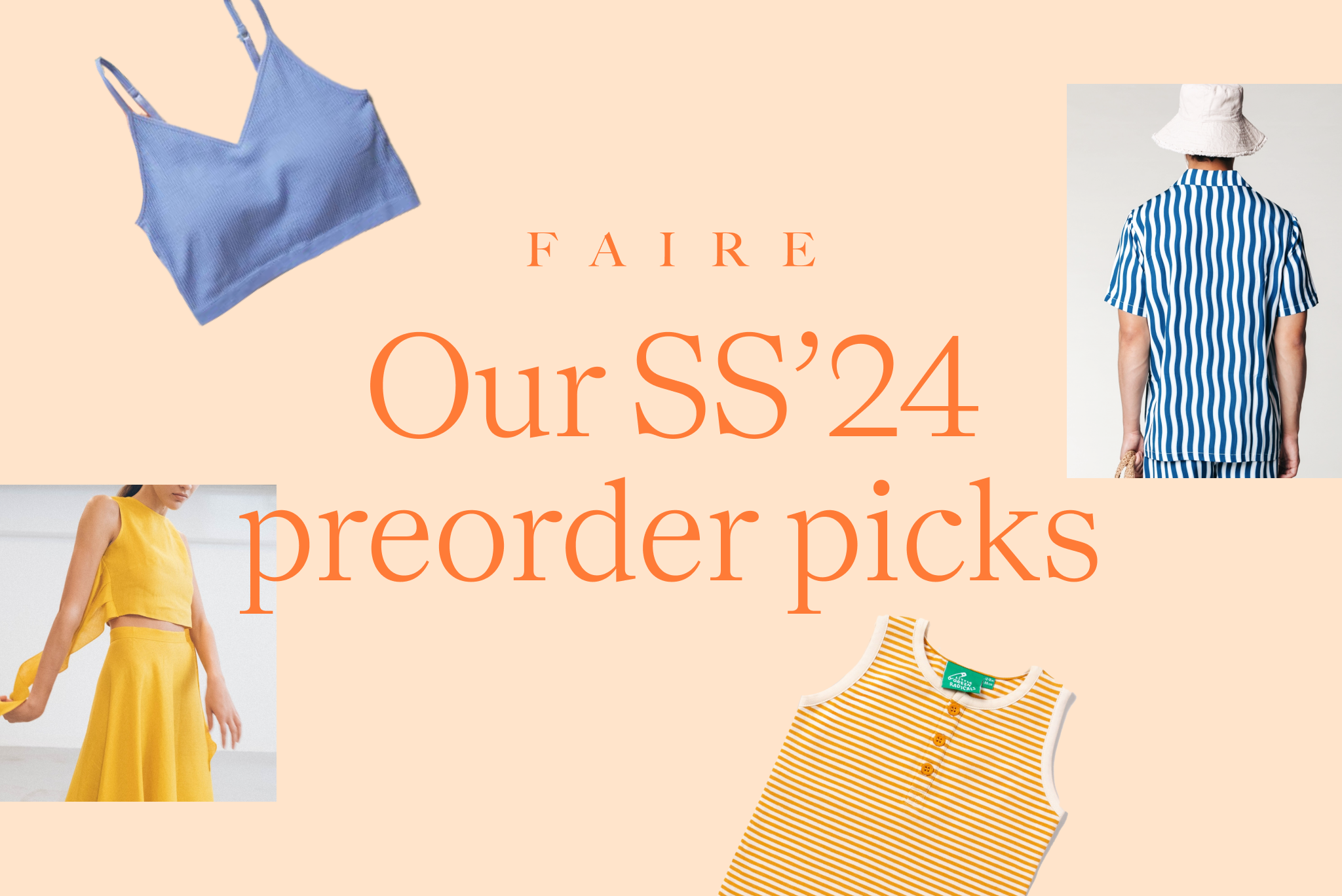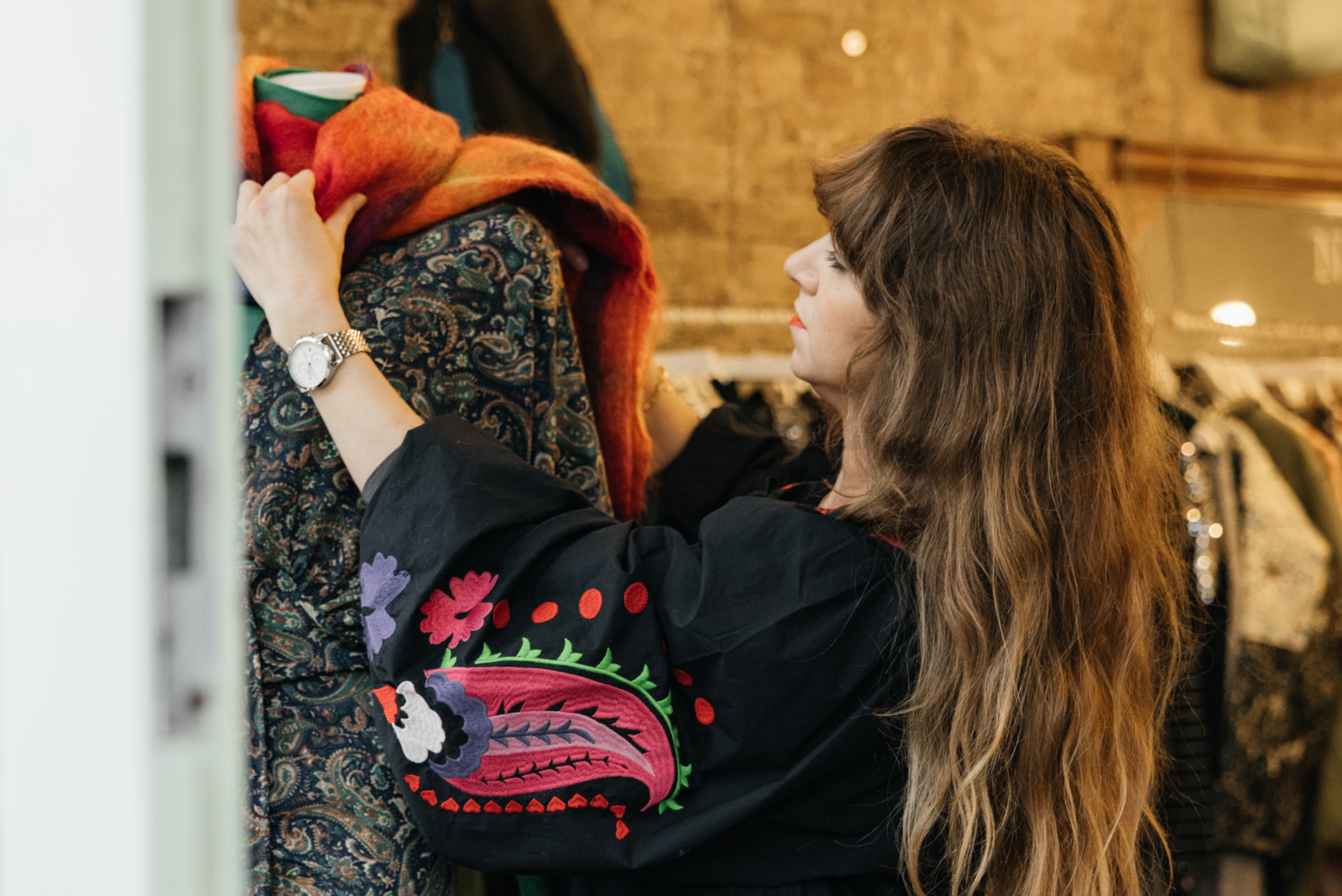
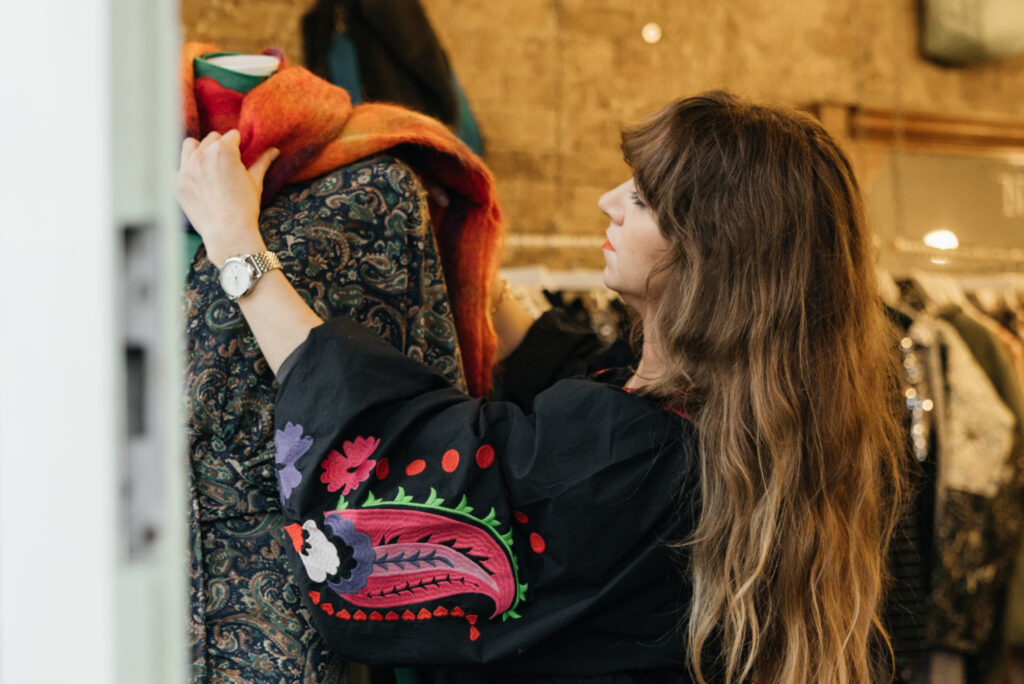
There’s something exciting about shopping for new clothes, reimagining your wardrobe, and walking out of a store feeling like a million bucks. Sometimes, when you see just the right cozy wool sweater or twirly dress in a shop window, you feel like it’s actually calling your name. What gets a shopper through the door and into the fitting room? Fashion marketing, fashion merchandising, or most likely both. Fashion marketing and fashion merchandising are two parts of the same overall strategy that makes people want to buy your apparel, shoes, and/or accessories.
You may already know that fashion marketing is all about advertising your products to specific consumers. What, then, is fashion merchandising? It’s the art and science of buying, displaying, and visually promoting fashion merchandise, and it depends heavily on product placement, pricing, quantity, and timing. All of this adds up to that magical feeling for shoppers when they find just the right thing.
Sound like a lot to take in? The following steps will help you home in on a strategy, and soon you’ll be marketing and merchandising in style.
What is fashion merchandising?
At its core, fashion merchandising is about curating the right mix of products for your specific customer, displaying them in a visually compelling way, and ultimately telling a cohesive brand story through your merchandise. The goal is to create an immersive shopping experience that not only delights customers but also drives tangible business results.
What is the difference between fashion merchandising and marketing?
While fashion merchandising and fashion marketing are closely linked, they play distinct roles in a boutique’s success. In essence, if marketing is the promise, merchandising is the fulfillment of that promise.
Here’s a closer look at some of the key differences:
| Fashion Marketing | Fashion Merchandising | |
| Focus | Attracting customers | Converting sales |
| Key Activities | Advertising, PR, social media | Buying, pricing, visual presentation |
| Goal | Generate brand awareness and desire | Maximize sales and profitability |
| Target | Potential customers | In-store shoppers |
| Timing | Pre-purchase | Point of purchase |
| Metrics | Web traffic, social engagement | Sales, margin, sell-through, turnover |
By aligning these two functions and ensuring they work together seamlessly, you can create a cohesive brand experience that resonates with your target customer at every touchpoint.
What is a fashion merchandiser?
The person behind the strategy, a fashion merchandiser, makes choices about how a store’s products are presented. The specifics can vary depending on the size and type of retailer, but generally, a merchandiser’s responsibilities include:
- Staying ahead of the curve by researching and anticipating fashion trends, keeping on top of online markets, and analyzing sales data to inform future buying decisions.
- Selecting the right mix of products for the target customer, considering factors like style, color, size, price point, and brand.
- Setting sales and margin goals, creating and managing budgets, and following recent research into trends to maximize profitability.
- Building and maintaining relationships with vendors, negotiating terms, and ensuring timely delivery of products.
- Creating compelling in-store displays, window presentations, and floor layouts that engage shoppers and drive sales.
- Monitoring stock levels, forecasting demand, and making strategic decisions about markdowns and promotions to optimize sell-through.
- Working closely with teams across the organization, from buying to marketing to store operations, to ensure a cohesive brand experience.
In essence, a fashion merchandiser is equal parts artist and strategist, using both creative vision and analytical skills to drive the business forward.
The benefits of a strong fashion merchandising strategy
Ultimately, effective merchandising allows you to transcend just selling products—it allows you to sell a lifestyle, an emotion, an aspiration. By telling a compelling and cohesive story through your merchandise, you invite customers to be part of that story.
By investing time and resources into crafting a thoughtful, intentional approach to merchandising, you can reap significant rewards for your business. Let’s dive into some of the key benefits and explore how they might look in practice for different types of stores.
Differentiate your store
In today’s crowded retail landscape, standing out is essential. A strong merchandising strategy can help you carve out a unique niche and give customers a compelling reason to choose your store over others.
For example: A boutique known for avant-garde women’s clothes and accessories can reinforce its unique point of view through an unexpected product mix and bold, unconventional displays.

Increase sales
Strategic merchandising isn’t just about creating a pretty store—it’s about driving real, measurable results. By presenting products in a way that inspires customers and encourages additional purchases, you can significantly increase your sales.
For example: A children’s clothing store can boost its average transaction value by displaying complete outfits that make it easy for parents to visualize looks and pick up everything they need in one go.
Improve margins
Effective merchandising isn’t just about selling more—it’s about selling smarter. By making strategic decisions about what to buy, when to buy it, and how to price and promote it, you can boost your profitability.
For example: A footwear boutique can keep margins healthy by carefully balancing its assortment between core, regularly replenished styles and trendier, seasonal pieces bought in shallower depths.
Enhance customer loyalty
In the age of online shopping, creating in-store experiences that keep customers coming back is more important than ever. When your merchandising consistently resonates with your target customer, you build a powerful sense of loyalty and connection.
For example: A plus-size fashion retailer can foster deep customer loyalty by offering a curated assortment that celebrates body positivity in a welcoming, inclusive store environment.
Strengthen brand identity
At the end of the day, your merchandising is the physical embodiment of your brand. Every choice you make, from the products you stock to the way you display them, communicates something about who you are and what you stand for.
For example: A shop that sells vintage-inspired clothing can transport customers to another era and reinforce its brand identity by grouping products by decade, creating historically evocative vignettes, and incorporating period-appropriate decor and music.
Becoming a fashion merchandiser
If all of this sounds appealing, you might be drawn to the world of fashion merchandising. While there’s no singular path to becoming a merchandiser, here are a few common steps:
Step one: Education
Many merchandisers start with a bachelor’s degree in fashion merchandising, retail management, business, or a related field. These programs provide a foundation in the key principles of the industry.
Step two: Internships
Gaining practical experience through internships is crucial. Many fashion brands and retailers offer internship programs in areas like buying, visual merchandising, and product development.
Step three: Entry-level roles
Common starting points include positions like sales associate, assistant buyer, allocation analyst, or visual merchandiser. These roles provide hands-on experience and a chance to learn the ropes.
Step four: Specialization
As you grow in your career, you may choose to specialize in a particular area of merchandising, such as menswear, accessories, or home goods. Developing expertise in a niche can make you a valuable asset.
Step five: Continuous learning
The fashion industry is constantly evolving, so a commitment to continuous learning is essential. Stay up to date through trade publications, industry events, and professional development courses.
Beyond formal qualifications, a successful fashion merchandiser possesses a unique blend of skills and traits. A keen eye for style, a mind for numbers, a knack for trend spotting, and strong interpersonal skills are all part of the package. Most importantly, a deep passion for fashion and a desire to create memorable customer experiences are the driving forces behind any great merchandiser.
Building a fashion merchandising strategy
As an independent boutique owner, crafting a merchandising strategy that reflects your unique vision and customer is essential. Every element of your strategy should work together to create a cohesive, compelling experience that resonates with your target audience. Let’s explore the key components of developing a strong merchandising plan.
Collect inspiration
As we touched upon in this recent article on visual merchandising, it’s important to curate an aesthetic around your best products.
Many retailers are influenced by other brands, so if you are feeling stuck, you can seek inspiration from them. Use what you like, leave what you don’t like, and adjust according to what makes sense for your business.
You can also draw inspiration from the brands you stock in your shop. Take a look at these example product photos from well-loved fashion brands on Faire:
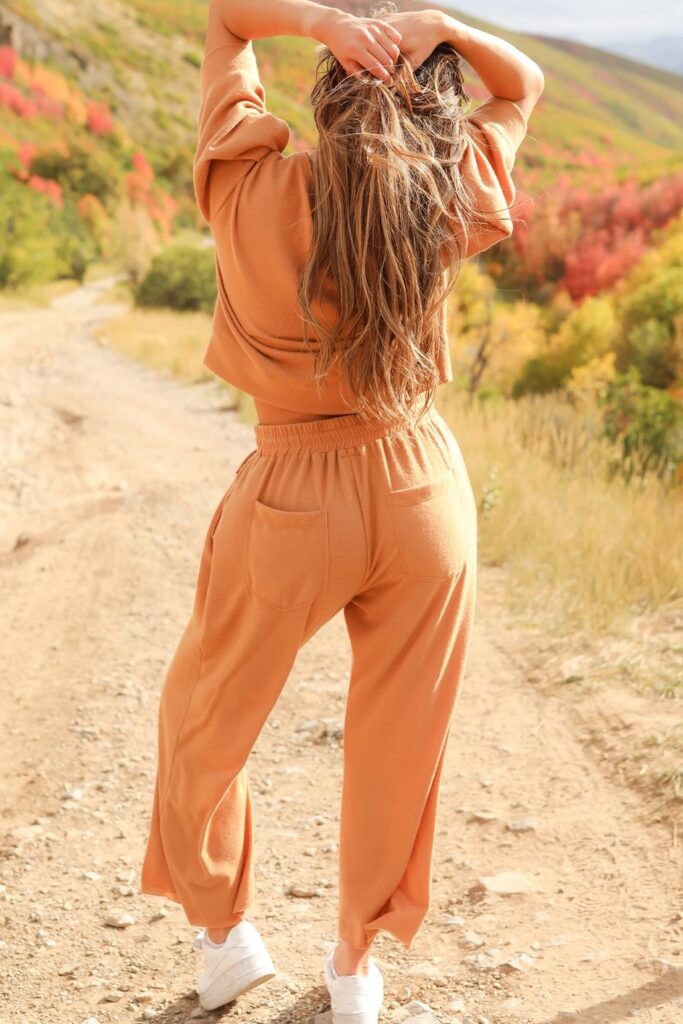
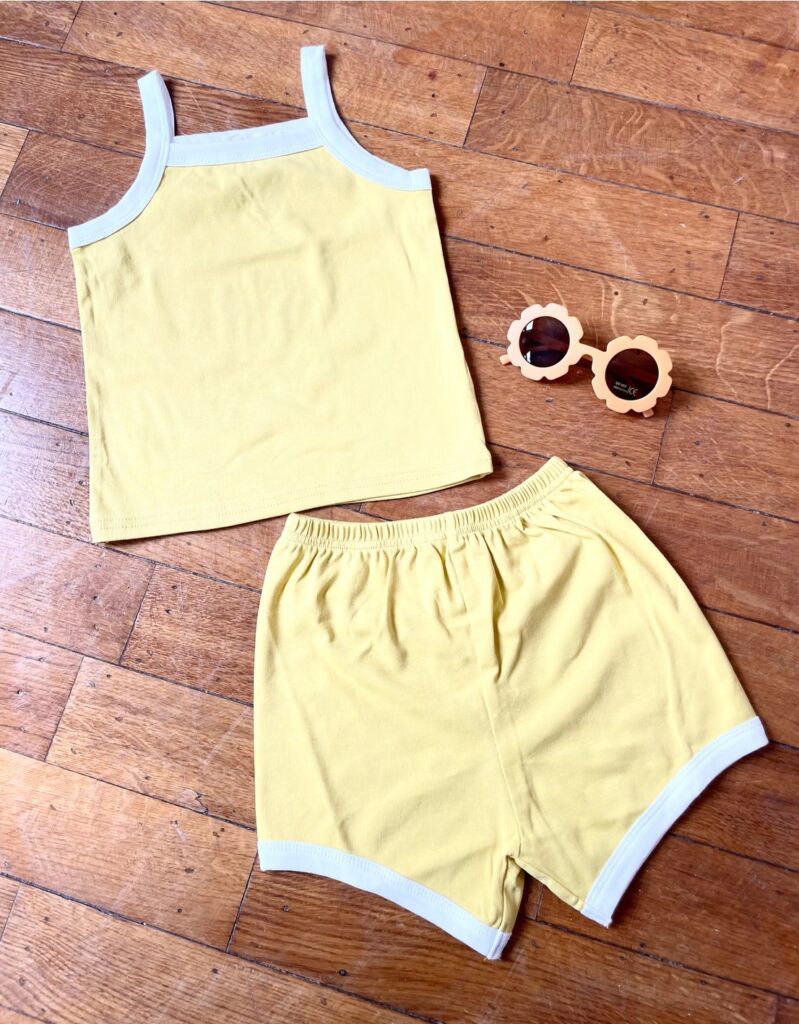
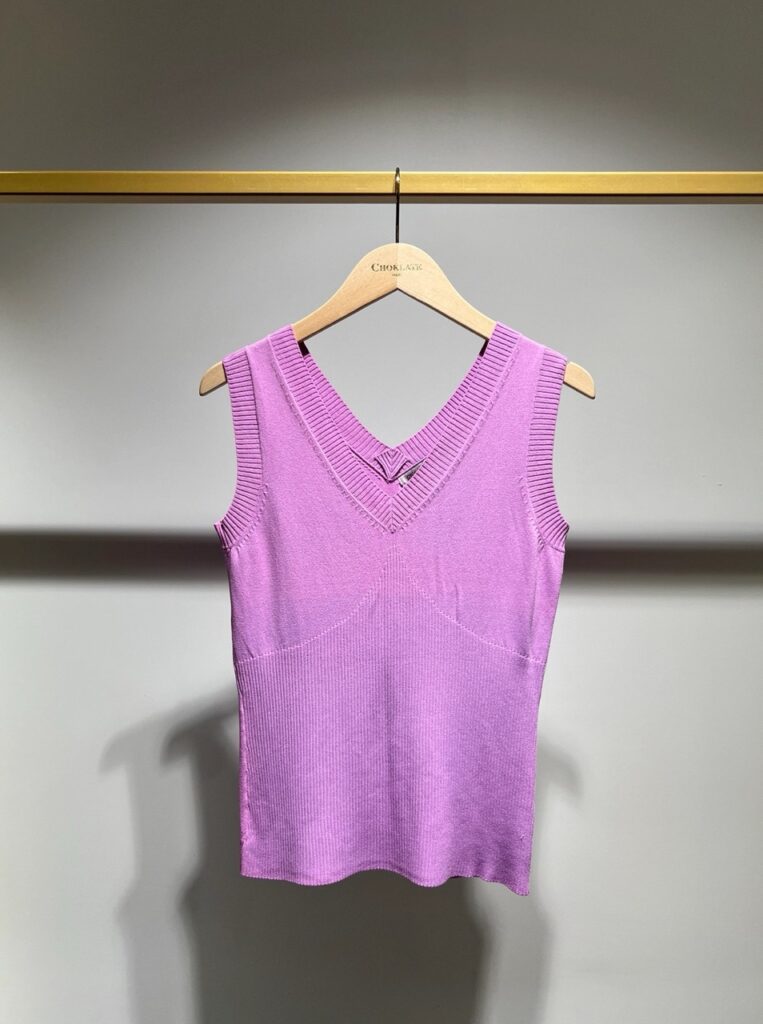
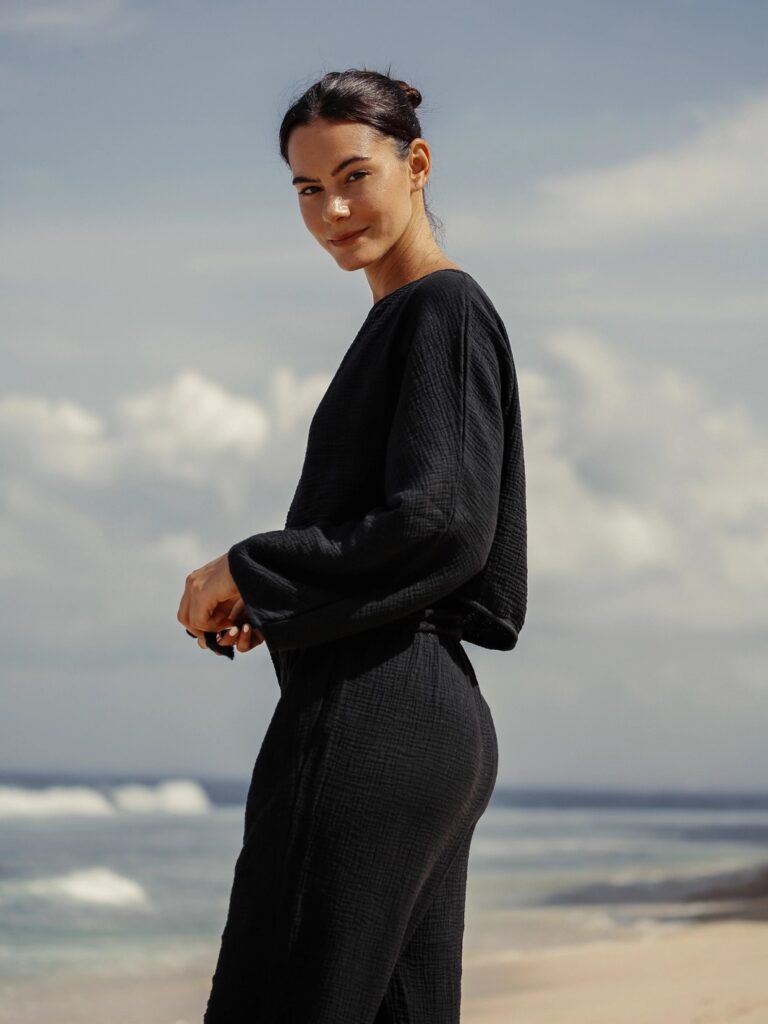
Even the style of photography can give you a taste of the brand’s sensibility and might inform how you present their products.
Finally, social media and image-sharing platforms are also great sources for insights into fashion trends and visual inspiration. For instance, if you specialize in women’s apparel, you might follow fashionable Pinterest users who create seasonal clothing boards.
Ask yourself: What adjacent cultural trends could provide inspiration for your boutique’s aesthetic and merchandising approach? For example, could the sleek minimalism of modern architecture inform your store design, or could the vivid colors of a popular art movement inspire your window displays?
Know your customer
The foundation of your merchandising strategy is a deep, holistic understanding of your target customer. Start by building a detailed customer profile, considering key demographic factors like age, location, occupation, and income level.
These data points provide a factual skeleton of who your customer is. But to truly bring your customer to life, you need to go beyond mere statistics and imagine what shapes their lifestyle, interests, values, and aspirations. Consider the role that fashion plays in their life: a functional necessity, a form of creative self-expression, a social status marker, or something else entirely.
Ask yourself: How might your target customers’ needs and preferences shift across different contexts and occasions in their life? Might the same customer shop with you for both work and weekend wear, for instance, or for both special occasions and everyday basics? Consider how you can merchandise your assortment to address these multiple facets of their lifestyle.
Develop your point of view
Defining your niche in the fashion landscape is about identifying the unique value and experience you offer that sets you apart from other retailers. This distinct point of view should come through not just in the products you carry, but in every aspect of your brand experience.
Cultivating a strong brand point of view requires more than just following trends—it means having a clear set of guiding principles and aesthetic codes that you filter every decision through. These are the non-negotiable standards and values that define who you are as a retailer, whether that’s a commitment to handmade goods, a celebration of LGBTQ designers, or a passion for being eco-friendly.
The more specific and intentional you can be in articulating your point of view, the easier it becomes to build a loyal following of customers who share your vision.
Ask yourself: If your boutique was a person, what would be its most distinguishing traits, quirks, and passions? Thinking of your store as a living, breathing character can help you develop a more three-dimensional and memorable brand identity that goes beyond just a generic style category.
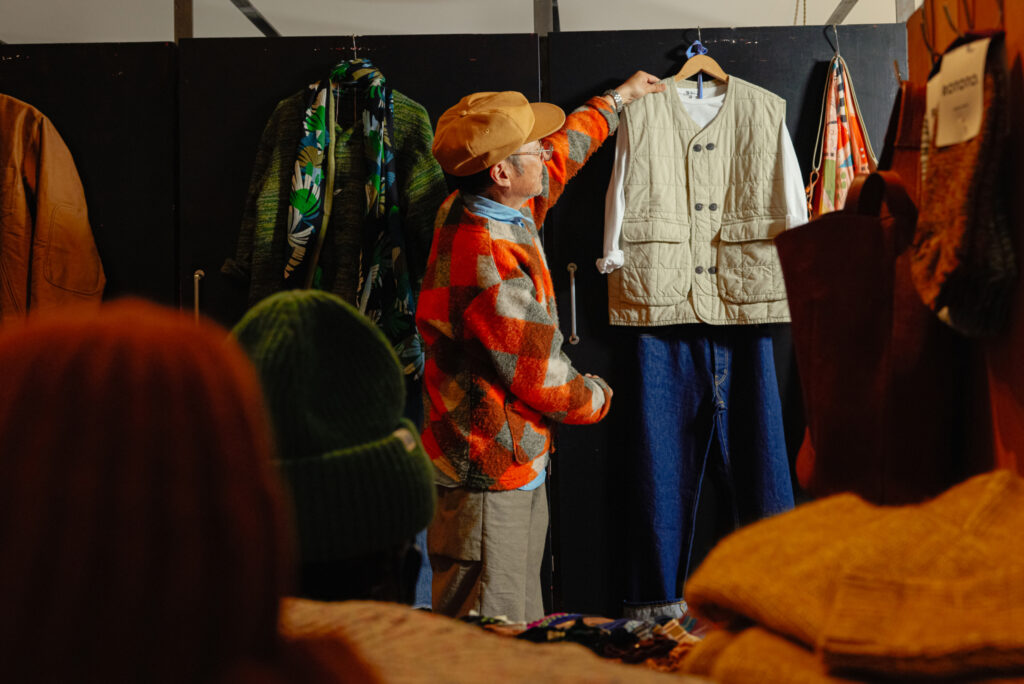
Plan your product mix
As you plan your product mix for each season, aim for a tightly curated assortment that reflects your point of view and appeals to your target customer. Rather than overwhelming shoppers with endless options, focus on a carefully edited selection of key pieces.
Look for versatile styles that can be mixed and matched to create multiple outfits, and choose colors and prints that work together to create a cohesive palette.
Balance of-the-moment trendy pieces with timeless staples to encourage long-term wearability, and offer a range of price points to appeal to different budgets.
Ask yourself: How can you use data from past seasons’ sales and customer feedback to make more informed decisions about your product assortment? Look for patterns in terms of silhouettes, colors, or price points that consistently resonate with your clientele, and let these insights guide your buying.
Create a compelling visual story
Your visual merchandising is where your strategy comes to life in your physical store. Consider color choice, lighting, and the kind of visual identity you’re trying to portray.
Group pieces into styled vignettes that suggest outfit ideas and showcase how different items work together. Highlight key trends and new arrivals in prominent displays that catch the eye from the moment shoppers walk in. Use mannequins to bring looks to life and offer styling inspiration.
Create focal points and visual journeys that lead customers through your store, inviting discovery and exploration. And keep your displays fresh by regularly rotating merchandise—this keeps the experience dynamic and gives shoppers a reason to return.
Use your window displays to make a first impression on new customers and remind previous customers what they love about your brand. They can be an integral part of your marketing strategy as well since they can pull customers in from the street who might not have shopped at your store otherwise.
Ask yourself: How can you use your visual merchandising to create a sense of discovery and surprise for shoppers as they move through your store? Consider creating unexpected moments, like a striking art installation or an interactive display, that make your boutique feel more like an experiential destination than just a place to buy clothes.
Last thoughts on fashion merchandising
Your boutique’s unique story should be woven into every aspect of the customer experience. From your decor to your packaging to your interactions with shoppers, every touchpoint is an opportunity to reinforce your brand narrative. Share the inspiration behind your carefully curated assortment, highlighting the unique details and craftsmanship that make each piece special.
As you develop your merchandising strategy, remember to stay true to your unique vision while remaining flexible to respond to changing customer needs and market trends. Embrace your role as a fashion merchandiser, and let your passion for curating beautiful, meaningful product experiences shine through. Your customers, and your bottom line, will thank you.

